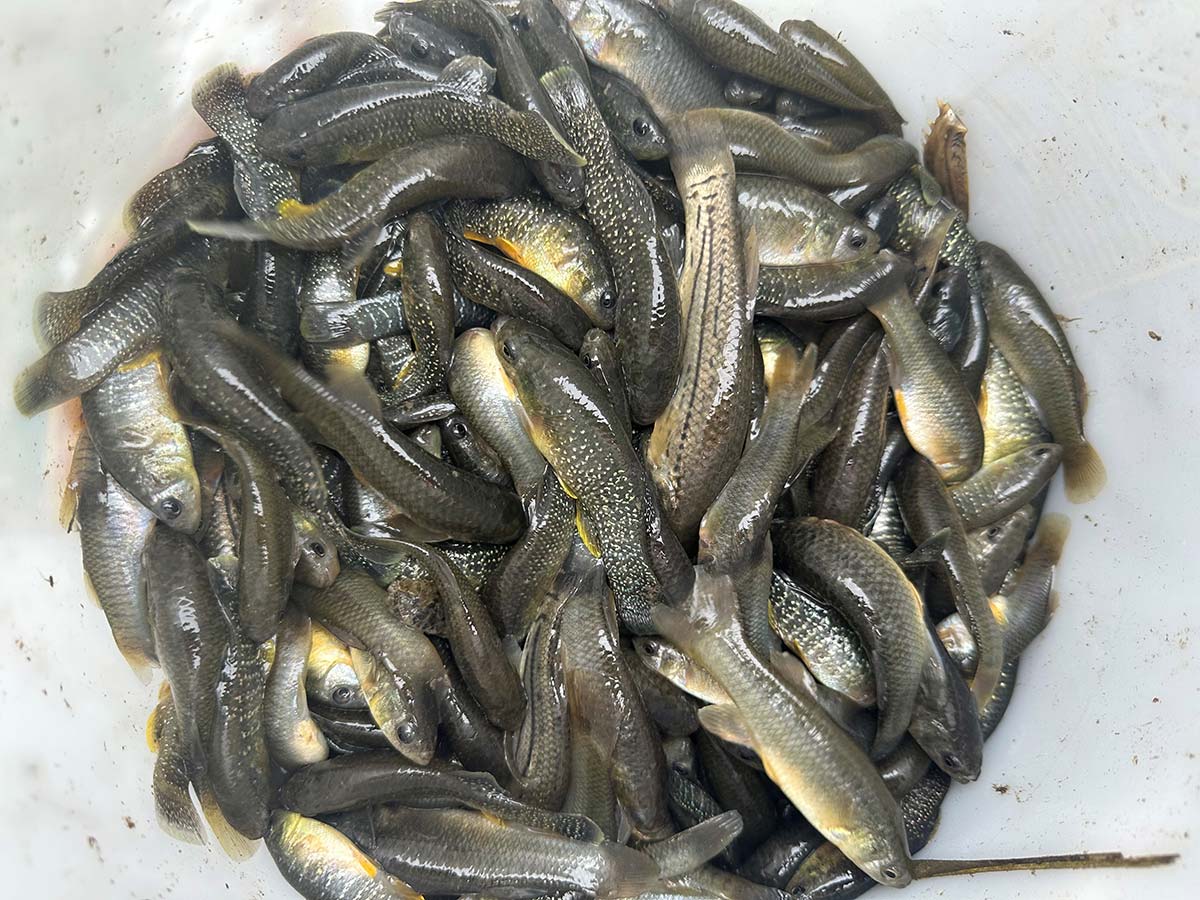
Minnows are easy to trap, here are the basics of getting it done.
A minnow’s value to the fishing world is at its peak during the summer. They are the most utilized live bait amongst fluke fishermen on the East Coast. Tackle shops’ ease in keeping them alive and their ability to sell them by pints, quarts and gallons make them supremely convenient for a quick grab-n-go bait purchase. But do anglers always need to buy them from a local tackle shop? Capturing minnows, identified also as mummichogs, mud minnows or killies, is pretty simple considering how complex the fishing hobby can be.
First, an angler has to buy some minnow traps. They can be bought at a local tackle shop, sporting goods store or online. Gee’s minnow traps have been around forever, are effective and dominate the market. They run $15 to $20 bucks each and their investment pays for itself after a couple bait loads are caught. Second, fishermen need to know how many traps they can set legally before they are considered a “commercial fisherman” and need a state license. That information is available on state fisheries websites. After educating oneself on the legal parameters, I suggest setting as many traps as are allowable.
Finding productive minnow territory is the next objective. Small feeder creeks that rise and fall with the tides are the best. Creeks and grooves that needle into the marsh meadows and are four to eight feet wide are perfect. The mummichogs swim up and down the creek on each turn of the tide thus making it ideal to set traps for at least one tidal cycle. Leaving the pots out for a full 12 hours, when possible, is optimal so the minnows pass by on both the flood and fall. I often leave mine out overnight and check them the following day so they get a good soak. Incidentally, minnows do not pot at night.
Creeks that have a small amount of water remaining even when the ebb tide is at its lowest are the best creeks. That layer, or tiny pool of water, will stop the minnows from drying out in the sun if they get captured and then the creeks goes bone dry. May until November is prime time to catch minnows in the Mid-Atlantic and Northeast, and as noted, fluke season places them in the highest demand. By catching one’s own minnows, there is an opportunity to have a quantity of large minnows which lead to more keeper fluke.
What is one to do if there aren’t many wetland marshes where they live? Well, minnows love to swim on the muddy contours of any skinny back water. They’ll zip along the edges and hang around any kind of structure. Consider pipe outflows, broken shells, concrete, muscle beds, rocks, dock pilings or boat ramps. These spots aren’t generally as productive as the marsh, but they shine in its absence.
Baiting a minnow trap is easy. Bunker is the most widely used bait for commercial minnow trappers so, of course, it works for the recreational sector. One adult bunker, cut in half and placed in the trap, will work for one trapping cycle. I find that using fish skins is another suitable and highly effective bait. In a pinch, I’ve used skates, cut bluefish, diced sea robins, hot dogs, cat food and left over dinner meat. Anything that’s legal and meat-based will catch. But I caution anglers to use baits that don’t leave leftover bones after minnows strip the flesh. Separating the bones from the minnows is a hassle and sometimes one can get poked and cut. That’s where skins from fillets work best because they get completely devoured.
A couple little additional tips and tricks include the following. Make sure your traps are properly weighted down or tied off to a stake that won’t pull away on full moon tides. Speaking of extreme tides, they are the worst for trapping minnows. Lazy tides with less gravitational pull are best. If you find some honey holes, keep their location to yourself because minnows can get fished out. Keep a separate pair of boots, pants and shirt if you intend to trap in the marsh where the detritus and mud will make for a mess. Not just fluke like minnows – every estuary fish will gobble them up including trophy weakfish. Drop some minnows on a wreck and expect black sea bass to instantly attack. Pitch them or chum them for mahi and buckle up.
Minnow trapping isn’t for everyone; there’s the mud and muck, plus the bugs. If it was that amicable, everyone would be doing it and the tackle shops wouldn’t be running into shortages from weekend demand. However, for those who are willing to get down and dirty while exploring what nature provides, this is a great chance to enhance catch results.
Photo Caption – Small killies are an outstanding fluke bait and can produce cooler-filling limits.


